I get it, condensation in your terrariums can be super annoying.
Nobody likes a Gorillas in the Mist kind of situation with our plants playing the elusive protagonists behind shrouded glass.
Fogging glass is a natural side effect of plant transpiration (we do want our plants to breathe, after all), but too much condensation could be a warning sign.
Read on to find out how much condensation a healthy terrarium should have and the steps we can take to reduce it.
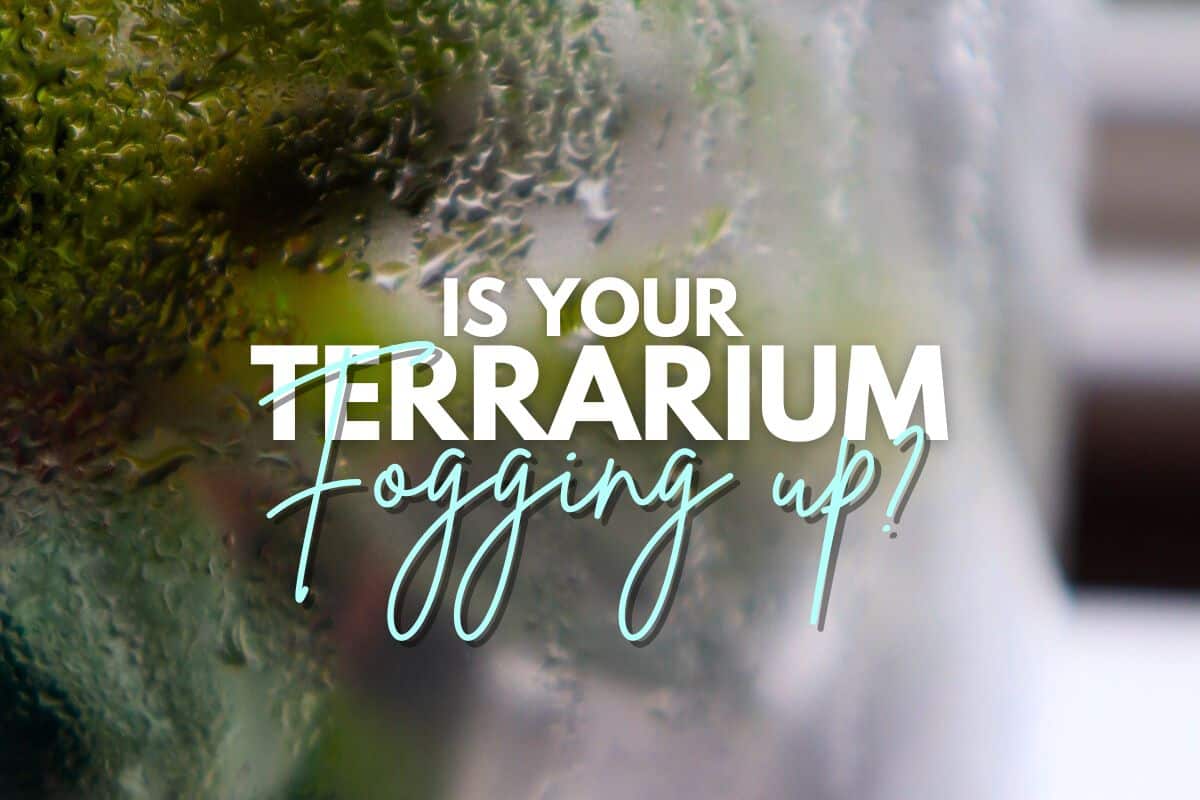
Terrarium Tribe is reader-supported. When you purchase through links on our site, we may earn an affiliate commission (at no further cost to you). 💜
Why Does Terrarium Glass Mist Up?
First things first, if we’re going to try to tackle condensation forming on the glass, we need to figure out why it’s doing it in the first place.
Generally, condensation happens because of two fundamental reasons:
- High humidity – Terrariums trap humidity within the glass containers (up to 100% relative humidity if it’s completely sealed), so there’s a lot more moisture in that air.
- Higher temperature – Most importantly, higher than the outside. Terrariums act like greenhouses, absorbing light and retaining heat. Water is condensing due to the difference in temperature between the inside and outside of your terrarium. If your cold house is cooling the temperature of the glass, when warm terrarium air hits the cold surface, it reaches its dew point and condenses.
There are other contributing factors, but ultimately, they all boil down to these two things.
Should a Healthy Terrarium Mist Up?
Arguably, yes. It’s a natural cycle.
The rate of transpiration (the evaporation of water from plants) depends on lots of factors, but most importantly for us, it’s down to light, temperature, and humidity.
All three of those things are going to be heavily affected by the strength of the sun during the day.
So, it’s no surprise that plants will be transpiring most during the peak of the day when the sun is at its brightest and warmest.
You can absolutely expect your terrarium to mist up a little during the morning, afternoon, and definitely midday sun. At 30°C, a leaf may transpire three times as fast as it does at 20°C.
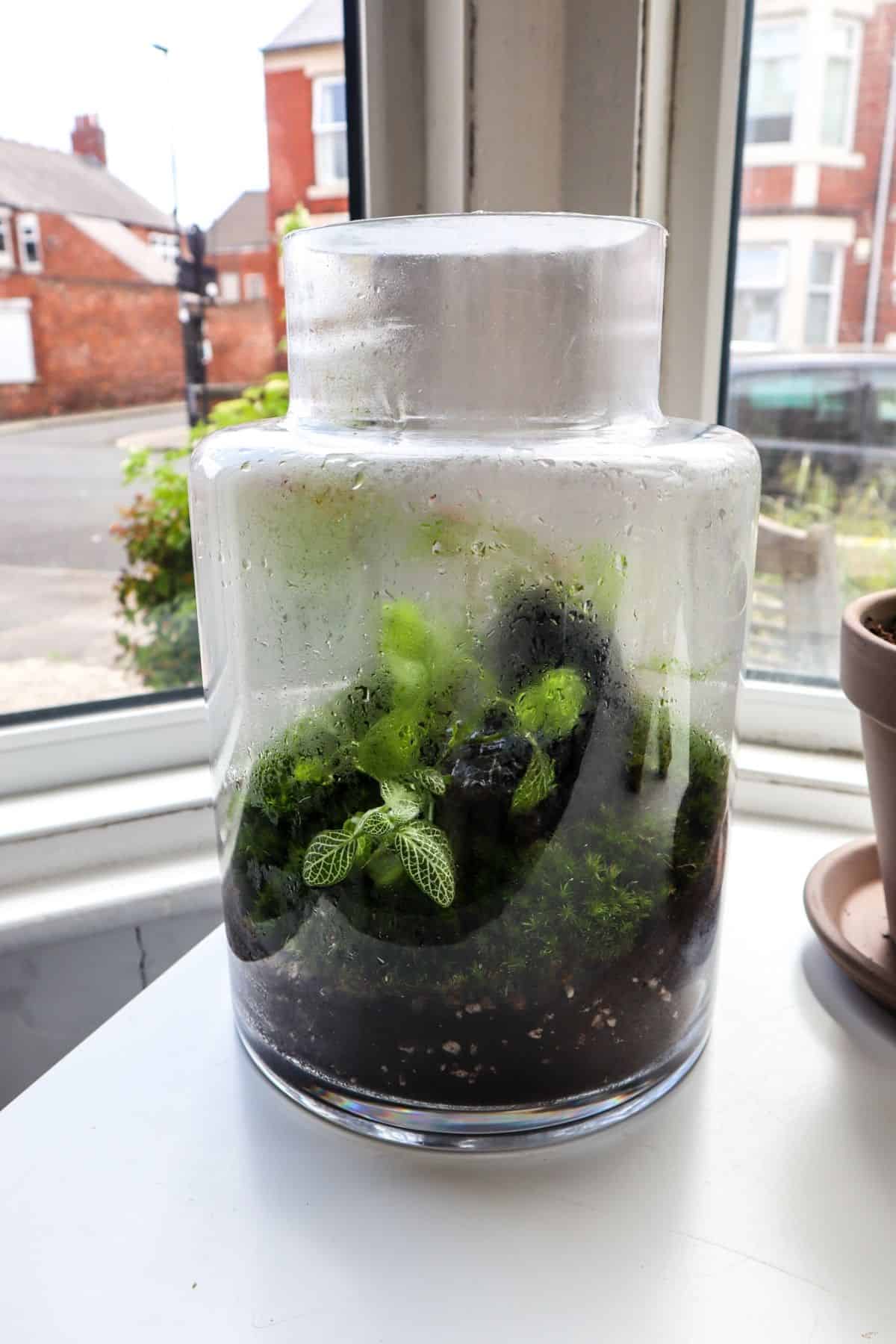
At night, when the external stimuli drop in intensity, plants dramatically reduce transpiration, and so condensation will drop.
In many ways, it’s important that water condenses and drops back down. It perpetuates the water cycle and makes sure our plants are getting constant nourishment.
But that’s not to say we need the water constantly sitting on the sides of the glass. In fact, a terrarium that’s constantly foggy likely has too much water in the system.
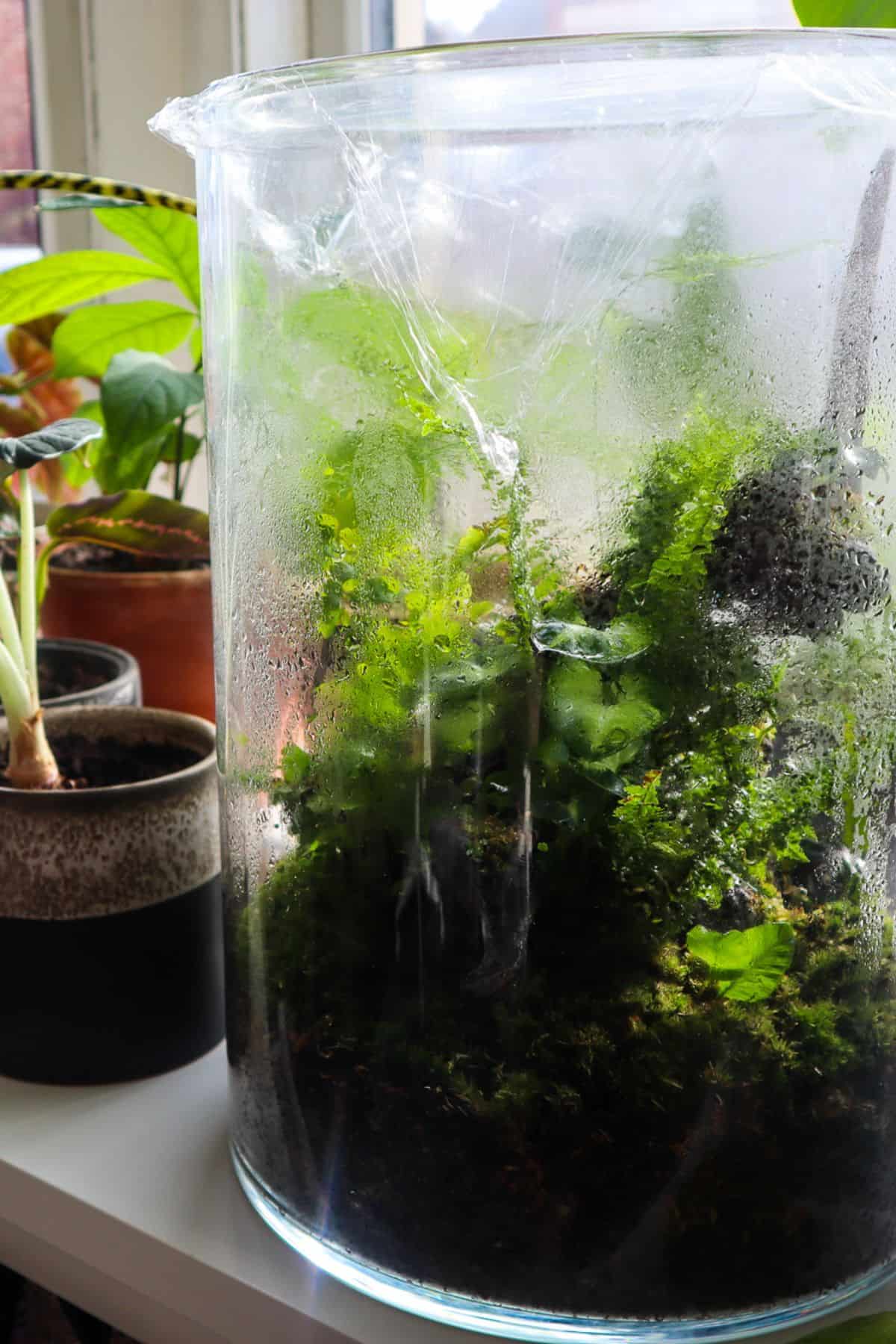
👉 Check my Guide to Watering a Terrarium for more help on getting this right!
How to Reduce Terrarium Condensation
Natural Solutions
#1: Keep your room temperature stable – Remember, water condenses on the inside of a terrarium because the terrarium air is warmer than the glass. If you can keep your house – and therefore terrarium glass – at a stable, warm temperature, it could drastically reduce the condensation level.
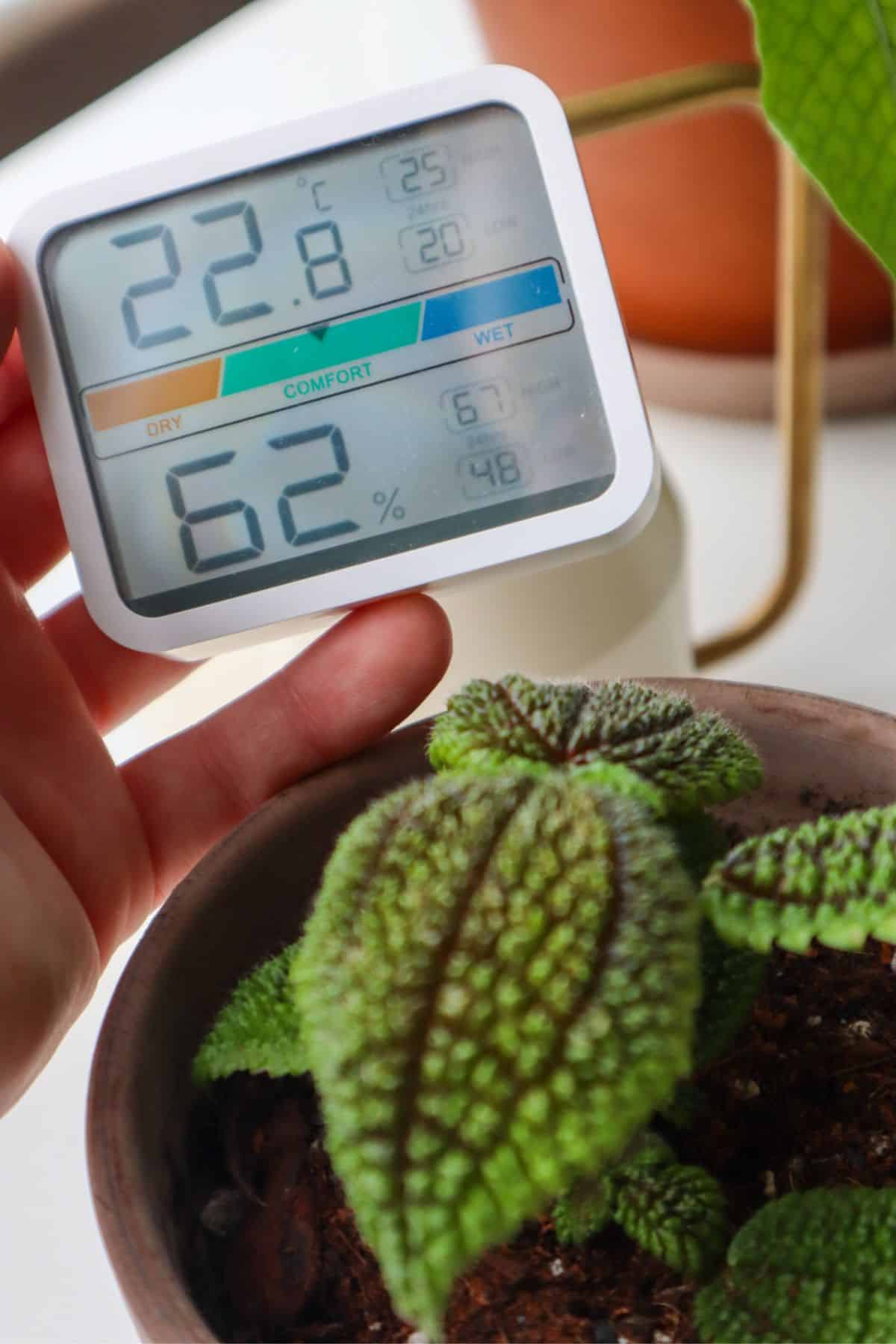
If you can keep your terrarium glass warmer than the terrarium air’s dew point; theoretically, you could stop water condensing altogether.
#2: Use a magnet cleaner – Magnet cleaners (like this one) are usually reserved for cleaning algae from aquarium glass, but they can work in a terrarium, too, if your terrarium glass is large and flat.
It’ll remove the condensation from the sides without removing it from the system as cloth would. A quick fix rather than a permanent solution, but it does the trick!
#3: Open up your terrarium – Ventilating your container occasionally will balance out the terrarium humidity levels a little.
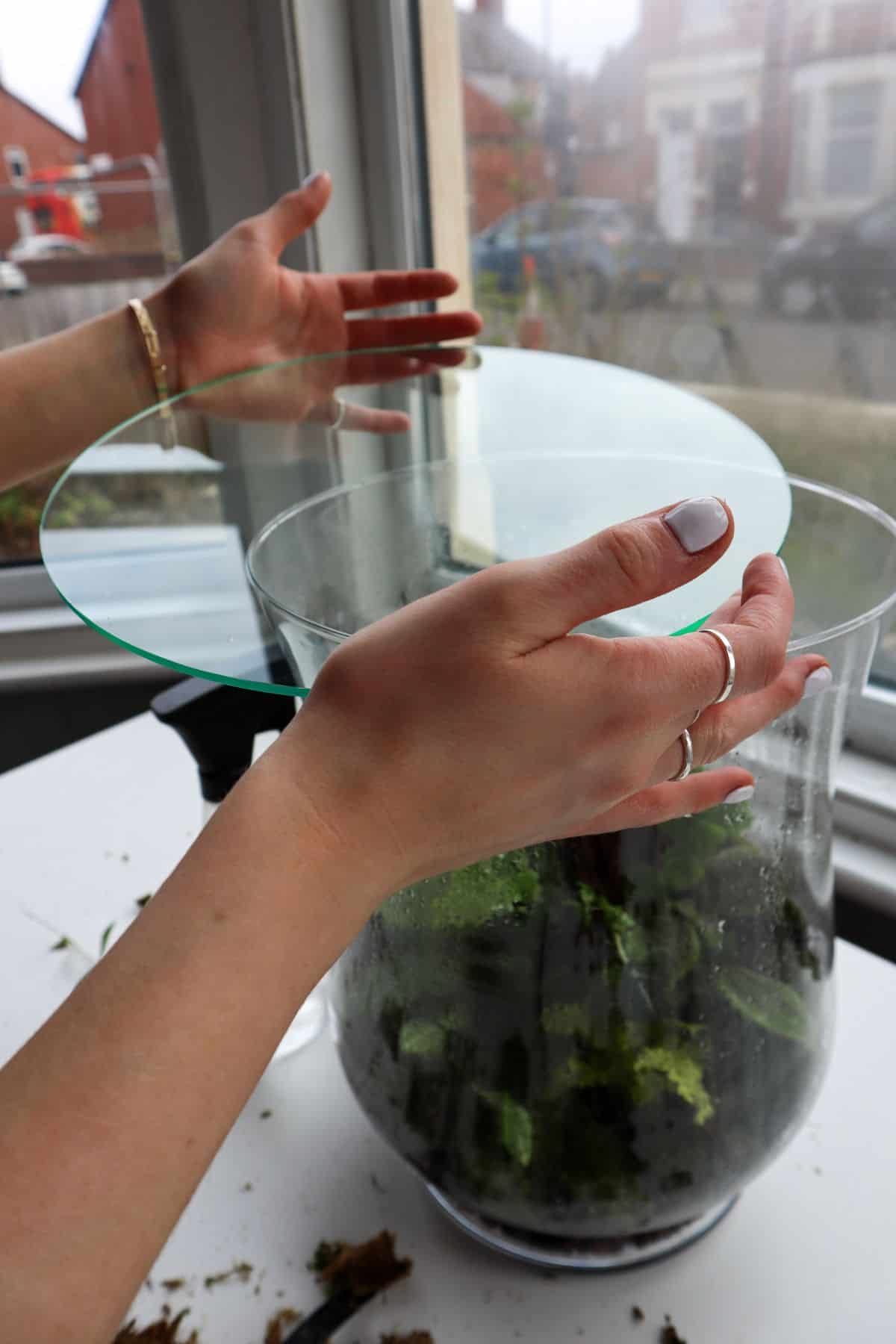
Finally, if there’s too much condensation (i.e., even during the night), then you can also try this.
#4: Wipe the inside of the glass – I know, it seems almost insultingly obvious, but doing so not only immediately removes the condensation but also removes water permanently from the system.
Artificial Solutions
* A quick note to say that these are experimental suggestions. I haven’t personally tried any of these, but I’ve seen them suggested or used somewhere in the world, and they seem to have some merit.
#1: Install a fan – This is guaranteed to reduce, or even entirely stop, condensation forming on the glass by improving air circulation. It’s a staple in most vivarium builds but not so common in terrariums.
It’s not ideal – because fans are unnatural and unsightly – but you can get some very small fans these days. This one is only 40mm wide, so you can probably hide it if the terrarium is big enough and you’re creative with your setup.
#2: Create a ventilation valve – It kind of defeats the point of having a sealed up terrarium, but a small valve for ventilation might be enough to reduce condensation whilst preserving the majority of the humidity.
For example, these terrarium eggs from Design House Stockholm claim to have a spout that “also functions as a valve that lets in air and regulates the moisture and temperature levels inside the greenhouse.” But I can’t personally attest to those claims.
#3: Spray the glass with water repellent – Some products, such as Rain-X, are used on windscreens a lot. They force water to bead up and drop off, so spraying a coating on the inside of your terrarium is sure to reduce condensation.
In theory, this will work, but I’d be concerned it might harm your plants. If you do choose this route, I’d leave plenty of time between coating the glass and adding the plants. Might be worth experimenting with, but maybe not on your favorite/expensive plants…
Over to You
Have you tried any of these solutions with success?
I’ve yet to experiment with any artificial solutions, but if they solve the problem with no damage to your plants, I’d love to hear your success story!
And, of course, remember to check out our shop for all of your terrarium supply needs.

I found the best and simplest way to get rid of access moisture is to take the lid off for 5-10 minutes at a time,then monitor the cycle for a few days to see if corrected.If you over do it ,add only some water in a mist form from a spray bottle.
Great tip 😄
My terrarium is outside on my screened porch. Lots of condensation in the morning. I slide the lid to allow for small ventilation. Replace lid when condensation disappears. Seems to do the trick.
Thanks Dan!
I just started making terrariums and most of them are less than a month old, so there’s definitely an adjustment period for them. I live in a tropical country (Philippines) so I open the lids of my terrariums once a day to let out the excess moisture. Then as the microclimate starts to stabilize in each terrarium, I open them less often (1-2x a week at most). I figured that if it’s hot in my room, it’ll be hotter inside the terrariums (especially since they’re under LED lights throughout the day)! Giving them 5-10 minutes of ventilation when needed is more than enough to keep the heavy condensation at bay.
Hi,
I’m a Science teacher. May I have your permission to use this photo for an online education worksheet?
Of course! 👍